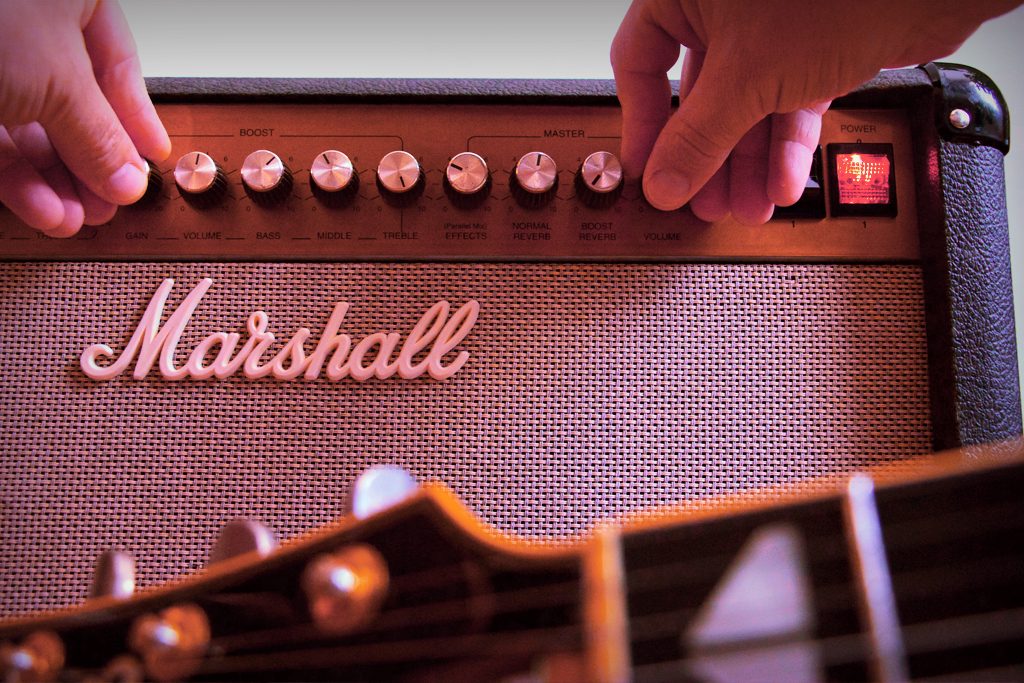
There are no complicated and simple things. The explanation for them makes them so.
Audio compressors aim to optimize the signal level during or after recording. In this way, the weak levels become stronger and the strong levels weaker.
The principle can also be explained in a fun and interesting way like this. Imagine you are playing the guitar. The guitar is plugged into an amp. Your friend – Anton P. Ivanov (API) decides to help you and with his left hand grabs the potentiometer for adjusting the sound level of the amplifier, and with his right hand grabs the potentiometer for the output level to the speaker. You start playing and it tries to boost the signal when you play softly and cut it when you play loud. Its purpose is to get a more balanced signal level of the guitar as a whole, not to have places where it is much louder than others.
So far the goal is clear. In compressors, this potentiometer that corresponds to the sound level (the one that Anton turns with his left hand) is called Treshold, or in other words – a sound level threshold from which the other functions of the compressor work. The speed at which Anton manages to reduce the level of the signal on the compressors is called Attack, and the speed at which he returns the level back after you “normalize” your playing level is called Release. This potentiometer that Anton turns with his right hand for the output level is called MakeUp Gain, i.e. the level that goes out to the speakers. There is also one parameter, which is Ratio. If you told Anton above a certain strength to reduce to a certain level and otherwise not to reduce, it is Ratio 1:1 ie. it doesn’t go down no matter how hard you play. However, if you told it above a certain force to reduce the potentiometer by half, say from 10 to 5, then the Ratio is 2:1. Accordingly, it is 4:1 if it reduces from 10 to 2.5 and so on.
In fact, the operation of the compressor in principle is something like that, but it is a little more special, because in this case Anton reduced the strength of the entire signal, while the compressor reduced the sound only above this set level. I.e. when you play with level 5 set, everything next to it will be preserved, and only the loud peaks above level 5 will be reduced to that level. Also, the speed at which Anton starts turning the knob can be very sharp or be relatively smooth. This parameter in compressors is called Knee – translated as knee. It can be hard or soft.
Now, however, as everyone has their own peculiarities, Anton is not as fast as we would like, and we are calling Stefan S. Lazarov (SSL). He is faster than Anton on the decline. But there are other features when working with potentiometers.
Thus, in practice, different manufacturers such as API and SSL, Neve, Tube-Tech, Teletonix, through the compressor models produced by them, give users technically different options.
There is no universal compressor. There are several basic types of compressors.
FET – Field Effect Transistor. It is based on one of the most legendary compressors in history… of compressors 🙂 The most legendary model is UREI – 1176. (Now owned by Universal Audio). Fastest of all other species. Sharp and direct. When the sound needs a punch.
OPTO – based on an optical element. It is slower and is often used in parallel when it is necessary to give the feeling of “pumping” in the background. The most legendary model is the TELETRONIX LA-2.
VCA – Voltage Controlled Amplifier. Fast and transparent. It doesn’t “color” the sound like other compressors. When compression is needed without adding “character”, this is the ideal option. The most legendary model of this type is probably the DBX 160A.
There are countless brands, models and types of compressors. Some of them have other options that give different technological features and advantages. For example, the Look Ahead function splits the signal, distorts one part without compressing it, and mixes it with the other compressed part. This can prevent some sound distortions caused by fast attack and release. Some compressors can even ignore a certain spectrum of the sound. For example, low frequencies are not compressed and the action of the compressor affects only the others.
Side Chain allows another audio signal to control compressor parameters. For example, when the bass drum hits, the bass can lower its level. A very common trick in dance music.
Limiters are a variety of compressors. Technically they are compressors with slightly different parameters. Their attack is very fast, the Ratio is 1 to infinity, and the Release parameter is very fast. With them, the goal is to raise the overall level of the signal by limiting the peaks during this raising. They are the most frequently used weapon in the so-called Loudness war :).
